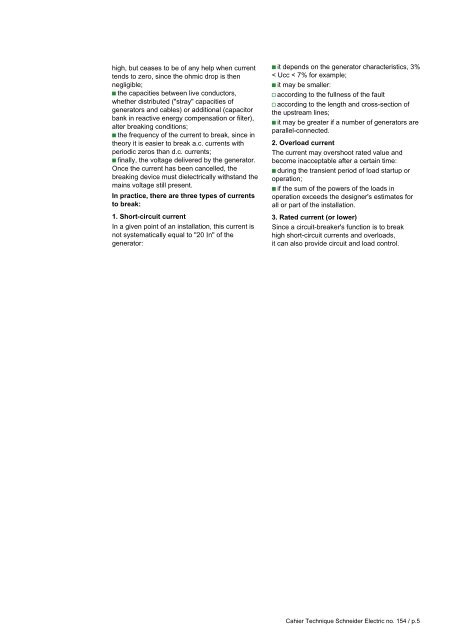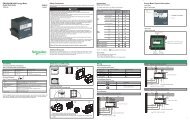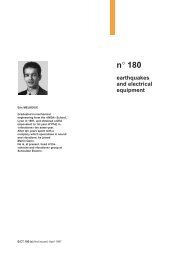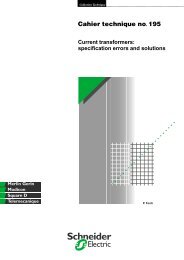Low Voltage circuit-breaker breaking techniques - Schneider Electric
Low Voltage circuit-breaker breaking techniques - Schneider Electric
Low Voltage circuit-breaker breaking techniques - Schneider Electric
- No tags were found...
Create successful ePaper yourself
Turn your PDF publications into a flip-book with our unique Google optimized e-Paper software.
high, but ceases to be of any help when currenttends to zero, since the ohmic drop is thennegligible;c the capacities between live conductors,whether distributed ("stray" capacities ofgenerators and cables) or additional (capacitorbank in reactive energy compensation or filter),alter <strong>breaking</strong> conditions;c the frequency of the current to break, since intheory it is easier to break a.c. currents withperiodic zeros than d.c. currents;c finally, the voltage delivered by the generator.Once the current has been cancelled, the<strong>breaking</strong> device must dielectrically withstand themains voltage still present.In practice, there are three types of currentsto break:1. Short-<strong>circuit</strong> currentIn a given point of an installation, this current isnot systematically equal to "20 In" of thegenerator:c it depends on the generator characteristics, 3%< Ucc < 7% for example;c it may be smaller:v according to the fullness of the faultv according to the length and cross-section ofthe upstream lines;c it may be greater if a number of generators areparallel-connected.2. Overload currentThe current may overshoot rated value andbecome inacceptable after a certain time:c during the transient period of load startup oroperation;c if the sum of the powers of the loads inoperation exceeds the designer's estimates forall or part of the installation.3. Rated current (or lower)Since a <strong>circuit</strong>-<strong>breaker</strong>'s function is to breakhigh short-<strong>circuit</strong> currents and overloads,it can also provide <strong>circuit</strong> and load control.Cahier Technique <strong>Schneider</strong> <strong>Electric</strong> no. 154 / p.5
















